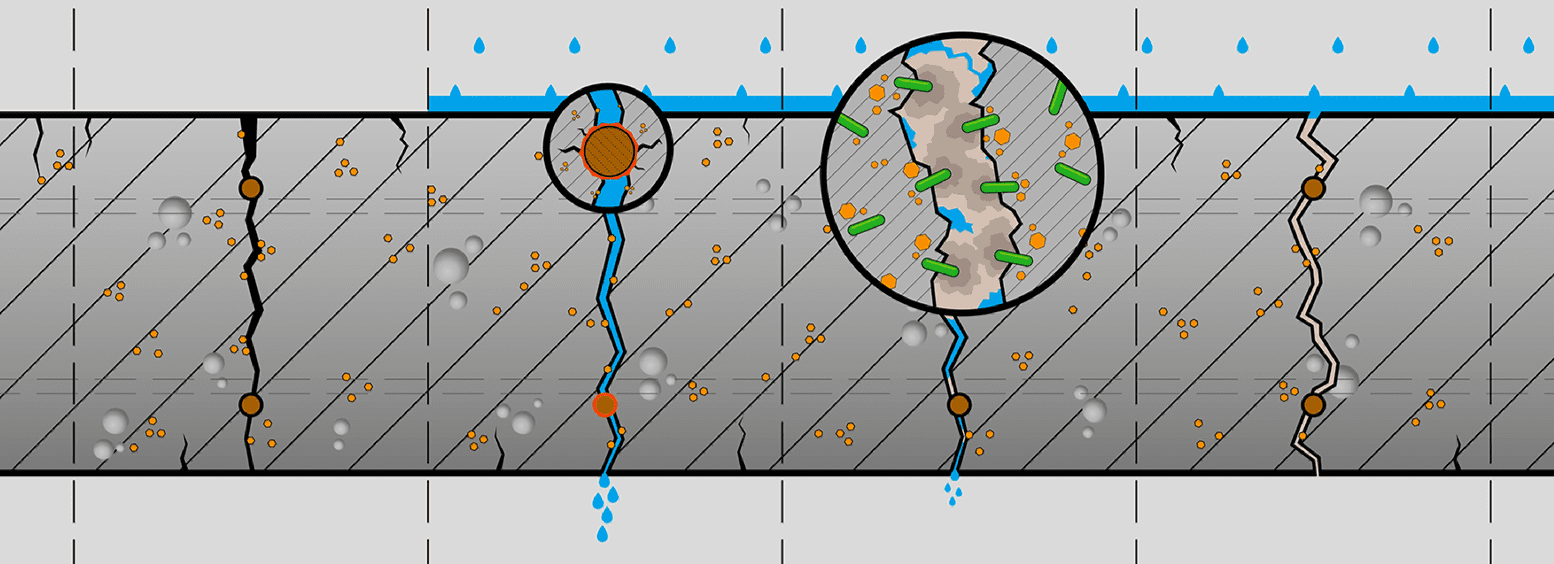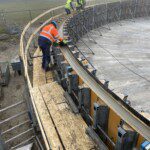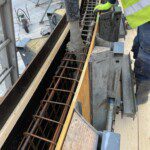Sustainable concrete for a better environment
A biobased self-healing agent for low carbon concrete.
- Reducing shrinkage reinforcement
- Less downtime, longer lifespan
- Reduction of CO2 emissions
1. Reducing shrinkage reinforcement
By providing concrete with self-healing properties, larger crack widths can be accepted in the design phase, which means that the shrinkage reinforcement can be significantly reduced. Reduction of up to 40% is possible.
2. Less downtime, longer lifespan
Concrete structures executed with Basilisk Self-Healing Agent require less maintenance. As a consequence the amount of unexpected repairs are significantly reduced, which would normally lead to traffic jams or downtime. In addition, Self-Healing Concrete extends its lifespan by approximately 30 to 40%.
3. Reduction of CO2 emissions
By adding crack healing micro-organisms to the concrete mix, steel can be reduced significantly. This way Basilisk delivers an important contribution to a lower environmental impact. The environmental indicators such as CO2 emissions, are an important driver for achieving the international agreed environmental objectives.
How it works

1. Concrete Cracks
Cracking is an accepted and common phenomenon in concrete structures.
2. Leakage & Corrosion
However, cracked concrete may result in serious leakage and reinforcement corrosion issues.
3. Autonomous repair
When in contact with water, the bacteria will multiply and starts to produce limestone.
4. Autonomous repair
Due to the formation of limestone, cracks are autonomously repaired, preventing leakage and protecting the reinforcement.
Where can it be used
Tunnels & Bridges
Basements & Diaphragm walls
Liquid-containing reservoirs
Flooring & Parking decks
Waste water treatment plants
Marine, Harbors & Airports

“Self-Healing is continuing the story…
Lowering the amount of carbon in a concrete product or structure is a step in the right direction, but we can still do more to tackle the effects of climate change. If we look at other nature based solutions, we can add more value to concrete products.”
Project
Basement construction
For the design of a basement parking construction in Rotterdam (The Netherlands), the constructor has to work with a crack width of 0.10 mm based on the watertightness requirements. Traditionally, the amount of (shrink) reinforcement is determined based on this requirement. As an alternative, another calculation has been made, now with a concrete mixture that has been modified with the Basilisk Self-Healing Agent. Due to the Self-Healing properties of this mixture (which will seal cracks autonomously), a crack width of 0.17 mm can be used for this project, resulting in less reinforcement. The savings in reinforcement is achieved because the constructor can calculate the design based on the durability requirements. After all, the Self-Healing Agent closes cracks, so that watertightness requirements are no longer normative.
In this example, concrete with the Self-Healing Agent reduces 27 kg/m³ of shrinkage reinforcement (steel) and leads to a decrease in the Environmental Impact score of 19.3%. This way, Basilisk Self-Healing Agent provides an important contribution to a more environmentally friendly concrete.







